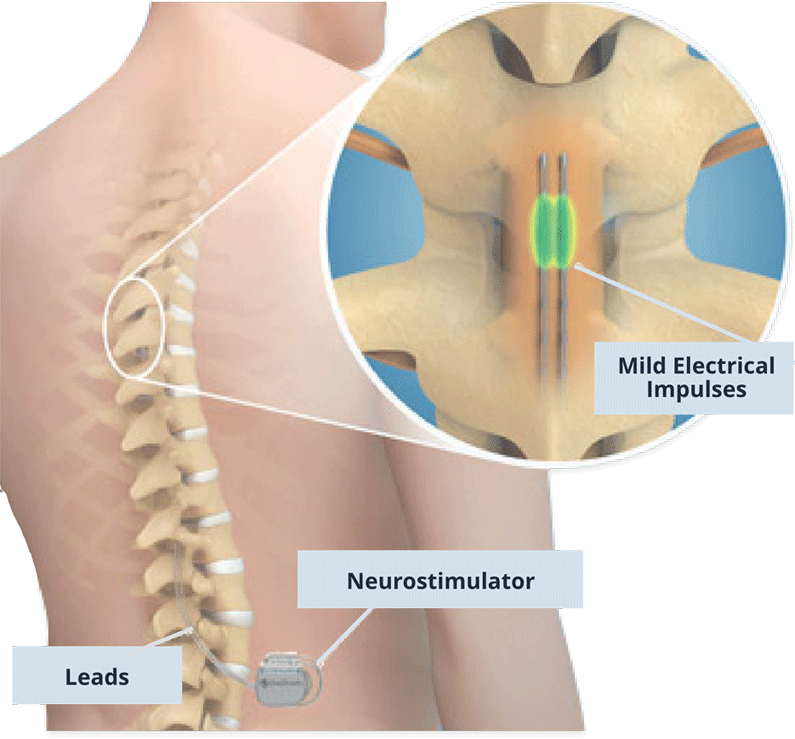
Back Pain Treatment Home » Alternative Treatments » Peripheral Nerve Stimulator
Patients who suffer from nerve pain in the limbs, failed back surgery syndrome, complex regional pain syndrome, peripheral neuropathy, chronic back pain, peripheral vascular disease and sometimes, post shingles pain, may be candidates for spinal cord stimulation therapy.
Spinal cord stimulation therapy can provide pain relief and improve limb mobility and quality of life. The device sends low level electrical signals through the electrode/lead to the posterior, sensory aspect of the spinal cord, to block the transmission of pain signals to the brain. Many patients describe the stimulation as a tingling sensation. This tingling sensation is programmed to overlap with the areas of pain, thereby blocking it. The spinal cord stimulator can be programmed so that no tingling is felt at all, but still the pain message is blocked.
A psychological evaluation by a psychologist or psychiatrist is required by insurance companies to assure the patient has a good understanding of the procedure and to determine if it is an appropriate option for them from a psychological standpoint.
Before placing a permanent implant, your physician will perform an image guided nerve block to diagnose the nerve that is causing the pain. A psychological evaluation by a psychologist or psychiatrist is required by insurance companies before a peripheral nerve stimulator trial to assure the patient has a good understanding of the procedure and to determine if it is an appropriate option for them from a psychological standpoint.
Then, you and your care team will go through a peripheral nerve stimulator trial to ensure the implant will produce pain relief. The electrode (s) may remain in place for approximately 3-7 days to determine if significant pain relief is achieved.If this proves successful, a permanent implant will be provided. The device is small enough that it can be placed under the skin. You will be provided with a remote control that can turn the device on or off as needed.